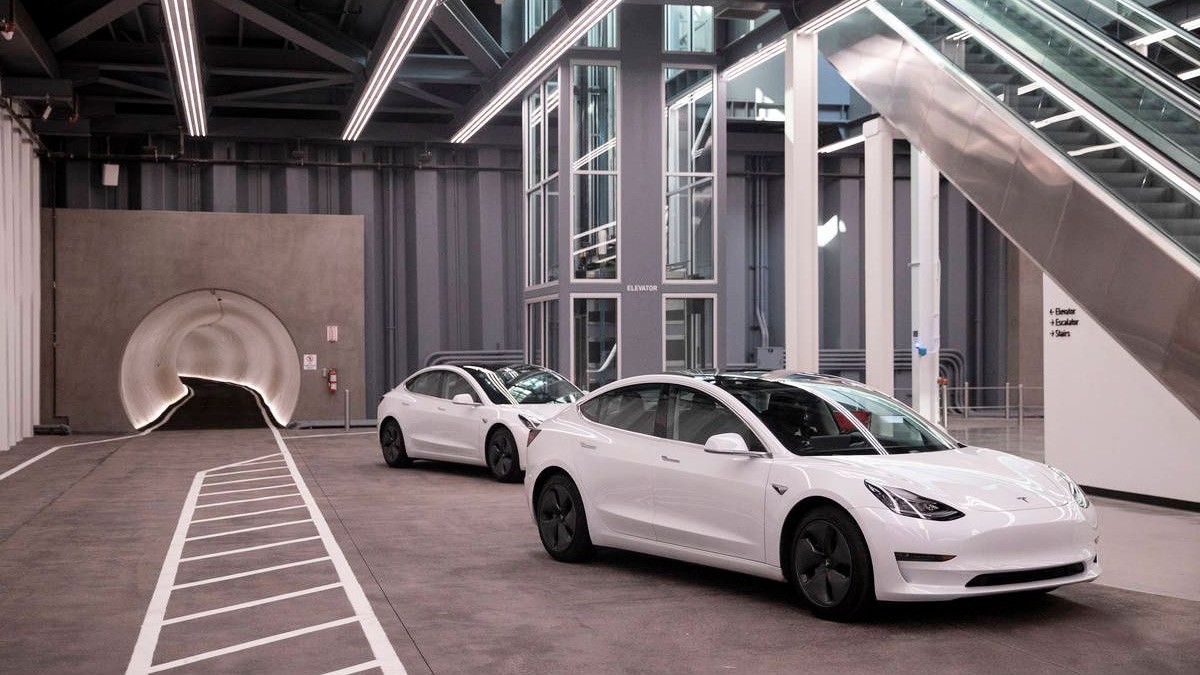Boring Company’s Vegas Loop has earned permission to extend from the Resort Corridor into downtown Las Vegas. The Las Vegas City Council unanimously approved the monorail agreement for the project on Wednesday. In total, the Vegas Loop will be a 34-mile tunnel network with about 55 stations.
The decision paves way for the underground transportation system featuring a fleet of Teslas to include five initial downtown stops, reports Las Vegas Review-Journal. The agreement with Elon Musk’s Boring Company is good for 50 years, and will tie into the system that is planned for Clark County’s jurisdiction, which includes several Strip properties and Allegiant Stadium.
Thanks to the entire team at the City of Las Vegas! Great discussion today, and TBC is excited to build a safe, convenient, and awesome transportation system in the City. https://t.co/cZUMFR0UCZ
— The Boring Company (@boringcompany) June 15, 2022
“Thanks to the entire team at the City of Las Vegas!” The Boring Company wrote on Twitter in response to the approval. “Great discussion today, and TBC is excited to build a safe, convenient, and awesome transportation system in the City.”
Among the 50+ stations in the network will be one at Harry Reid International Airport and one at the aforementioned stadium. Around five miles of tunnels, and at least five stations, will be included in the downtown. These stations include the Strat, Fremont Street Experience, the Slotzilla attraction, the Garage Mahal at the Circa Resort, and the Plaza Hotel, but others could be added in the future, including the Arts District.
Work on getting the permitting and other agreements secured for the planned stops in the downtown area can now begin, and Boring Co. President Steve Davis said he envisions tunneling for the project in downtown Las Vegas to begin sometime in 2023.
“This is step two and there are eight steps for us to be opening,” Davis said on Wednesday, as reported by Review-Journal. “There’s a long way to go and a lot of work to do. But if I were to guess on the spot I would guess we’d have machines in (the ground) next calendar year.”
— City of Las Vegas (@CityOfLasVegas) June 16, 2022
Further steps following approval of the monorail agreement include approval of design development studies; approval of final design and construction plans and permits; construction; operational testing; securing a certificate of operation; and commencing full service.
For now, only 1.7-mile tunnels are operational beneath the Las Vegas Convention Center (LVCC), turning what would be a 25-minute walk across the center into a two-minute ride, according to The Verge. The system uses human-controlled Model X and Y vehicles to transport passengers, despite Musk’s former plans about using sleds to carry cars through the tunnels.
Attendees to this year’s Consumer Electronics Show were able to try out the tunnel beneath the LVCC. While it was reportedly less congested than walking the convention center floors, some riders said they experienced traffic backups in the tunnel, which holds a maximum of 70 cars at a time. The network transported about 15,000 to 17,000 passengers during each day of CES.
Boring Co.’s Davis said that the system will be relatively cheap. For instance, a ride from the Fremont Street Experience downtown to Reid International (once that portion is operational) would cost about $12 and take eight or nine minutes. The company will collect all revenue from the system, with quarterly payments being made to the city based on a tiered system.
Permitting for various portions of the Vegas Loop in the Resort Corridor is currently in various phases. The Tropicana Loop on the south end of the Strip -including the Allegiant Stadium station-, The Caesars Loop for Caesars properties located along the central Strip, and an offshoot between the Westgate and the Las Vegas Convention Center are all next up.
The Las Vegas Convention Center hopes to begin providing rides to guests beginning in 2023 and anticipates routes connecting the Center to Resorts World will be operational by the end of 2022, according to The Hill. Each area of the network can be built in separate phases, and later be connected by tunnels.



